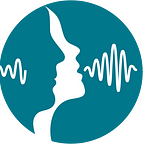Summer Season Requires Extra Vigilance on Hearing Protection for Children and Young Adults
Increased Leisure Time Can Mean More Time Spent on Personal Audio Devices. Unsafe Listening to Devices a Major Contributor to Hearing Loss Threatening 1.1 Billion Young People Worldwide
With children across the country gearing up for summer break, the American Speech-Language-Hearing Association (ASHA) is urging parents and caregivers to be mindful of seasonal hearing hazards that could put children at risk for noise-induced hearing loss. Chief among these hazards — which are especially prominent during the summer months — are unsafe listening to personal audio devices and exposure to noisy public events/venues such as concerts, sporting events, and fireworks.
The World Health Organization (WHO) estimates that 1.1 billion young people, or nearly 50% of people ages 12–35 worldwide, are at risk of hearing loss due to prolonged and excessive exposure to loud sounds. Specifically, WHO cites the threat of exposure to noise via personal audio devices and loud entertainment venues.
“Summer generally means more leisure time for children and young adults, which may lead to increased usage of personal technology devices — often with accompanying earbuds or headphones,” explains Shari Robertson, PhD, CCC-SLP, 2019 ASHA President. “Unfortunately, many young people listen to their devices in an unsafe manner — meaning they are regularly listening for too long, and at too-loud volumes — and this risk is magnified with more time on their hands during the summer. By being aware of the risk, and taking some very basic preventative steps, children and teens can protect and preserve their hearing. This will be an investment in their health that they will appreciate down the road.”
Unlike other forms of hearing loss, noise-induced hearing loss is completely preventable. However, once it occurs, it is irreversible. The pervasive threat of this particular form of hearing loss recently spurred WHO, in collaboration with the International Communication Union (ITU), to put forth brand new recommendations that collectively are the first-ever global standard for safe listening to personal audio devices. This is part of WHO’s “Make Listening Safe” campaign — an effort that ASHA has provided input on since the 2015 inception of the campaign.
The WHO-ITU standard has multiple recommendations, including equipping devices with features such as usage monitors that display how long a device has been used and at what volume, volume limiters that parents can set for their children, and warnings about the potential for hearing loss. It also specifies recommended usage for devices. For adults, the WHO-ITU standard recommends no more than 40 hours of listening weekly on a device at levels no higher than 80 decibels; for children, it specifies no more than 40 hours weekly at 75 decibels.
ASHA recommends that parents and caregivers:
- Talk to children about the importance of their hearing
- Closely monitor use of devices
- Have children take hourly listening breaks
- Set volume limiters if they are available (and absent a decibel level indicator, keep the volume level on devices at no higher than halfway)
- Provide ample “device free” time for summer activities
- Model safe listening for children and teens
When it comes to noisy public activities, such as sporting events, fireworks displays, and festivals and concerts, ASHA recommends that children and adults alike:
- Wear hearing protection, such as earplugs or earmuffs (for young children)
- Stay at least 500 feet from noise emitters, such as speakers
- Take periodic breaks from the noise — and leave if anyone is experiencing pain or ringing in their ears.
Anyone with concerns about their hearing should seek an evaluation from a certified audiologist.
